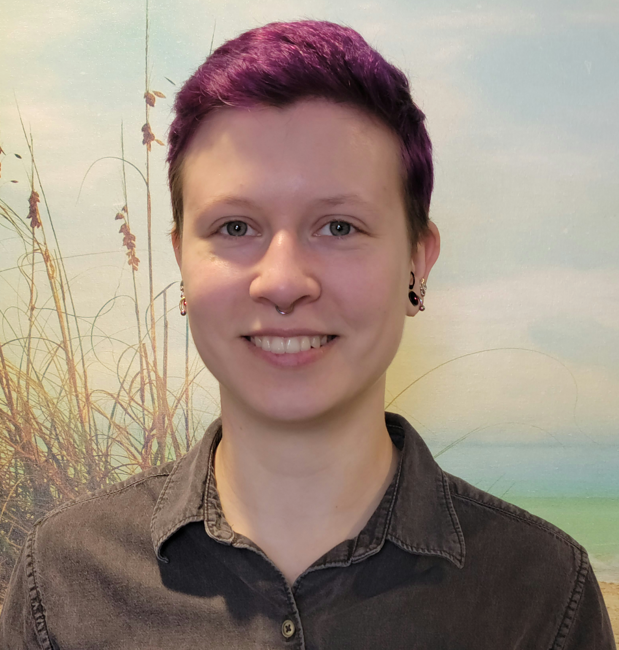 Did you know that transgender youth are four times more likely than their female, cisgender, heterosexual counterparts to have eating disorders? There are many factors that contribute to this population’s higher incidence of increased rates of body dissatisfaction, elevated rates of co-occurring mental health conditions such as depression and anxiety and increased risk for bullying, psycho-social stressors and emotional distress.
Did you know that transgender youth are four times more likely than their female, cisgender, heterosexual counterparts to have eating disorders? There are many factors that contribute to this population’s higher incidence of increased rates of body dissatisfaction, elevated rates of co-occurring mental health conditions such as depression and anxiety and increased risk for bullying, psycho-social stressors and emotional distress.
Even if you don’t consider yourself a specialist in working with these populations, it is important to have a general understanding of why they might co-exist and how you can best support individuals who present with either or both of these conditions.
1. Both transgender people and people with eating disorders may experience body dissatisfaction – the source of it may be both different and similar. In our culture, we seem obsessed with a particular ideal of “beauty” — one that has prompted an unhealthy diet culture, as well as general body unhappiness. Similarly, a trans person’s body may not match up to our society’s binary gender ideals of either “masculine” or “feminine” bodies, which may cause trans people to embody another layer of body dissatisfaction; neither are their bodies the right gender nor do they fit society’s ideal body type of that gender.
2. According to the current research, it seems that the idea of “an ideal thinness” and the idea of “an ideal femininity/masculinity” are risk factors for developing eating disorders like anorexia.
3. Not everyone whose gender identities differ from their sex assigned at birth has a negative body image.
4. As clinicians, it’s important to help individuals to understand the function of their eating disorder. Many transgender people report using food and behaviors as a way to manipulate their bodies in an attempt to “better” align with mainstream culture’s idea of beauty and femininity / masculinity. I’ve also seen cases where a client’s eating disorder has nothing to do with either of those things—rather eating disorder behaviors are utilized as a way to cope with difficult situations / emotions. Having this information will help to guide treatment and determine the most appropriate interventions.
5. Our job is also to create a safe space where clients can notice and process their negative thoughts. This means, doing your best to ask for and use the pronouns that someone asks you to use and being aware of the unique stressors that can often be experienced by this population. Eating disorder treatment is hard—we want to make sure we are fostering an environment where individuals can feel comfortable making their recovery their number one priority.
6. Just as we don’t blame parents for the development of their child’s eating disorder, it is important that we help individuals understand that they are not to blame for being gender dysphoric. Those who have gender dysphoria experience a fair amount of body dissatisfaction because of external pressures created by society, which often become internalized forms of oppression. As such, it is important to work with individuals on identifying the difference between external oppression that has been internalized vs their own values and beliefs. Similarly, we work with individuals with eating disorders to be better able to distinguish between the voice of the ED and their own unique thoughts and feelings.
7. In providing an ongoing clinical space for individuals to explore the intersection of their gender identity and eating disorder behaviors, as well as the appropriateness of hormone therapy for themselves, we as clinicians will be better able to help provide long term eating disorder recovery.
If you or someone you work with is transgender/gender non-conforming and living with an eating disorder, there is hope for recovery.
Resources:
a) Author: Monica Algars, Katarina Alanko, Pekka Santtilla, N. Kenneth Sandnabba
Title: Disordered Eating and Gender Identity Disorder: A Qualitative Study
b) Jennifer Couturier; Bharadwaj Pindiprolu, Sheri Findlay, Natasha Johnson
Title: Anorexia Nervosa and Gender Dysphoria in Two Adolescents.
c) Stuart B. Murray, Evelyn Boon, Stephen W. Touyz
Title: Diverging Eating Psychopathology in Transgendered Eating Disorder Patients: A report of two cases.
d) Monica Algars, Pekka Santtila, N. Kenneth Sandnabba
Title: Conflicted Gender Identity, Body Dissatisfaction and Disordered Eating in Adult Men and Women
e) Lindsay A. Ewan, Amy B. Middleman, Jennifer Feldmann
Title: Treatment of Anorexia in the Context of Transsexuality: A Case Report
f) Sarah E. Strandjord, Henry Ng, Ellen S. Rome
Title: Effects of Treating Gender Dysphoria and Anorexia Nervosa in a Transgender Adolescent: Lessons Learned
g) Bethany Alice Jones, Emma Haycraft, Sarah Murjan, Jon Arcelus
Title: Body Dissatisfaction and Disordered Eating in Trans People: A Systematic review of the Literature
 Nat Bush (they/them) is the Lead Mental Health Counselor for Rainbow Road with Walden Behavioral Care. They are earning their MSW from Fairfield University with a concentration in Sexual and Gender Minority Mental Health. Nat is passionate about LGBTQ mental health care and has found a particular passion for LGBTQ eating disorder treatment. They are always looking for more ways to provide equitable treatment for the LGBTQ community and provide trainings on LGBTQ inclusivity in their free time.
Nat Bush (they/them) is the Lead Mental Health Counselor for Rainbow Road with Walden Behavioral Care. They are earning their MSW from Fairfield University with a concentration in Sexual and Gender Minority Mental Health. Nat is passionate about LGBTQ mental health care and has found a particular passion for LGBTQ eating disorder treatment. They are always looking for more ways to provide equitable treatment for the LGBTQ community and provide trainings on LGBTQ inclusivity in their free time.
*This blog post does not necessarily represent the views of Walden Behavioral Care and its management. The Walden Blog is meant to represent a broad variety of opinions relating to eating disorders and their treatment.






